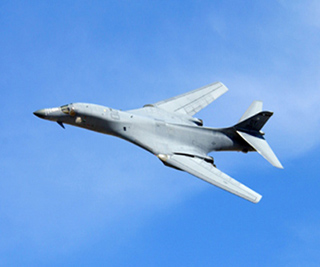
A B-1 Lancer bomber performs a fly-by during a firepower demonstration in Nevada, U.S.A. (U.S. Air Force photo by Master Sgt. Robert W. Valenca.)
Instructor(s)
Prof. Jonathan P. How
MIT Course Number
16.333
As Taught In
Fall 2004
Level
Graduate
Course Description
Course Features
Course Description
This class includes a brief review of applied aerodynamics and modern approaches in aircraft stability and control. Topics covered include static stability and trim; stability derivatives and characteristic longitudinal and lateral-directional motions; and physical effects of the wing, fuselage, and tail on aircraft motion. Control methods and systems are discussed, with emphasis on flight vehicle stabilization by classical and modern control techniques; time and frequency domain analysis of control system performance; and human-pilot models and pilot-in-the-loop controls with applications. Other topics covered include V/STOL stability, dynamics, and control during transition from hover to forward flight; parameter sensitivity; and handling quality analysis of aircraft through variable flight conditions. There will be a brief discussion of motion at high angles-of-attack, roll coupling, and other nonlinear flight regimes.


